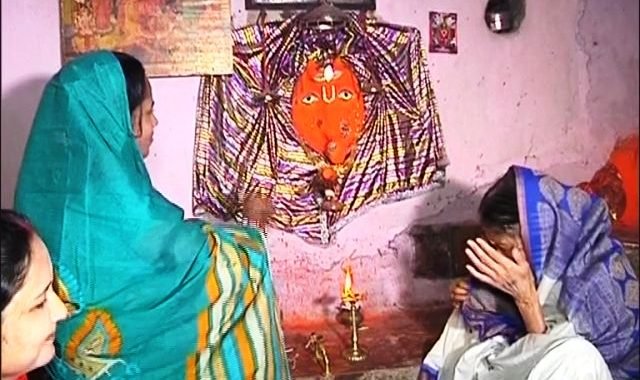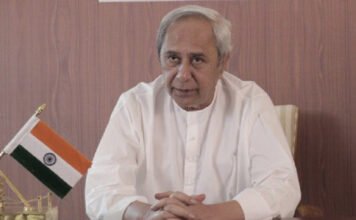September 01, 2020
By: Anirbaan Hritiq
Odisha has been a tribal-dominated state for ages, and as per its history state was ruled by merchants and tribal leaders unless and until an organized empire was established. The open thought process of the state where there was no imposition of any pre-defined ideology or way of life made its origin much more different than other states or regions.
Odisha which may have been projected as one of the poorest states in modern-day economic analysis but used to be one of the most prosperous regions in history and its origin could be traced back to the epic Mahabharat which Kalinga (the old name for Odisha) is described as one of the major tribes or clan. Kalinga Empire, which has been part of many invasions and also has been ruled under the umbrella of many big dynasties such as the Nanda Empire, Maurya Empire, Guptas Empire, and others has never lost its identity in this hustle for power and race. The historical legacy of Odisha stretches beyond the great Indian ocean as the traders (locally known as Sadhavas) used to travel to Indonesia and other regions for business activities, due to which even today there is a special festival celebrated in Odisha, named “Bali Yatra” (the word ‘Bali’ comes from Indonesian region of Bali, meanwhile ‘Yatra’ means a voyage or journey).
The progressive mentality and the nomadic independent culture of Odisha, were the primary behind the development of beautiful art and craft, dance forms, cuisines, architecture, and rich yet non-sophisticated Lord Jagannath culture which makes it universally acceptable in nature. Odisha has been one of the first states to initiate a rebellion against the British Empire, under the Leadership of Tribal Leader Veer Surendra Sai which even pre-dates Sepoy Mutiny, 1857, as well as Odisha is the first state to be granted statehood status on the 1st of April, 1936. These all facts, give the idea of Odisha in a nutshell that how it was able to establish an individualistic image due to its independent thought process and lifestyle of its people.
The term Nuakhai is an amalgamation of two words ‘Nua’ which means ‘New’, and ‘Khai’ which means ‘Food’. The festival of Nuakhai is predominantly celebrated by people of Western Odisha, and bordering areas of Jharkhand and Chhattisgarh. The festival is considered contemporary to harvesting festivals such as Lohri, Makar Sankranti, Baisakhi, Bohag Bihu, Onam, Pongal, Vishu, Gudi Padwa, Nabanna, and other festivals of similar nature. On the occasion of Nuakhai food items made out of newly harvested crops are offered to the local deities. Meanwhile, people celebrate by dancing, singing and wearing new clothes. Meanwhile, Nuakhai Juhar is commonly used by people to greet each other, and youngers of the family take blessings from the elders for a prosperous future.
The origins of the festival have been linked to ancient times by the local scholars, who have tried to establish the link of the festival to the concept of ‘Panchayajna’ which implies five important activities in the annual calendar of an agrarian society. These five activities have been classified as Sitayajna (the tilling of the land), Pravapana Yajna (the sowing of seeds), Pralambana Yajna (the initial cutting of crops), Khala Yajna (the harvesting of grains), and Prayayana yajna (the preservation of the produce). As per the concept, Nuakhai can be related to the process of Pralambana Yajna which means the initial cutting of crops and offering the same to the local God or Goddess asking for blessing for a fruitful year ahead.
Meanwhile, modern-day history (14th century A.D.) as per the oral accounts states, the efforts of the first Chauhan King, Ramai Deva, and the founder of the Patna State, which is part of the current Bolangir district of Odisha. Formerly being a completely tribal dominant region, the primary occupation area was in form of hunting and gathering. King Ramai, understood the importance of a settled agricultural establishment for the socio-economic growth of the Kingdom, as well as its inhabitants which were not possible via non-conventional activities. Therefore, King Ramai Deva, or Deo is widely credited for his ventures in establishing western Odisha as an agricultural region.
The preparation for Nuakhai starts 15 days prior to its commencement. Nuakhai, which is celebrated on Panchami Tithi (the fifth day) lunar fortnight of Bhadraba month is observed further divided into nine segments namely;
- Beheren (announcement of a meeting to set the date)
- Lagna dekha (setting the exact date for partaking of new rice)
- Daka haka (invitation)
- Sapha sutura and lipa puchha (cleanliness)
- Ghina bika (purchasing)
- Nua dhan khuja (looking for the new crop)
- Bali paka (final resolve for Nuakhai by taking the Prasad (the offering) to the deity)
- Nuakhai (eating the new crop as Prasad after offering it to the deity, followed by dancing and singing)
- Juhar bhet (respect to elders & gift transfers)
On the auspicious occasion of Nuakhai, the newly produced crops (rice) are offered to regional local Goddesses by families as per dates and timing pre-determined by the priests of the temples. Though the date and time of offering are calculated astronomically by priests at Bramhapura Jagannath Temple in Sambalpur. But, the auspicious moment for the offering is calculated in name of the Goddess according to region, in the Bolangir-Patnagarh area in the name of Maa Pataneswari, in Subarnapur area in the name of Maa Sureswari, in Kalahandi area in the name of Maa Manikeswari. Meanwhile, in the Sundargarh area, Puja (worship) is first offered by the royal family to the Goddess Sekharbasini in the temple which only opens for the occasion of Nuakhai. In Sambalpur, the auspicious moment is calculated by the head priest of the Maa Samaleswari Temple on which nua-anna or nabanna is offered to the Maa Samaleswari the primary deity of the Sambalpur region.
Nuakhai is widely celebrated by people of western Odisha origin throughout the country with great pompousness and gaiety. Meanwhile, it has been an instrument in promoting the agricultural legacy of Odisha worldwide.


























